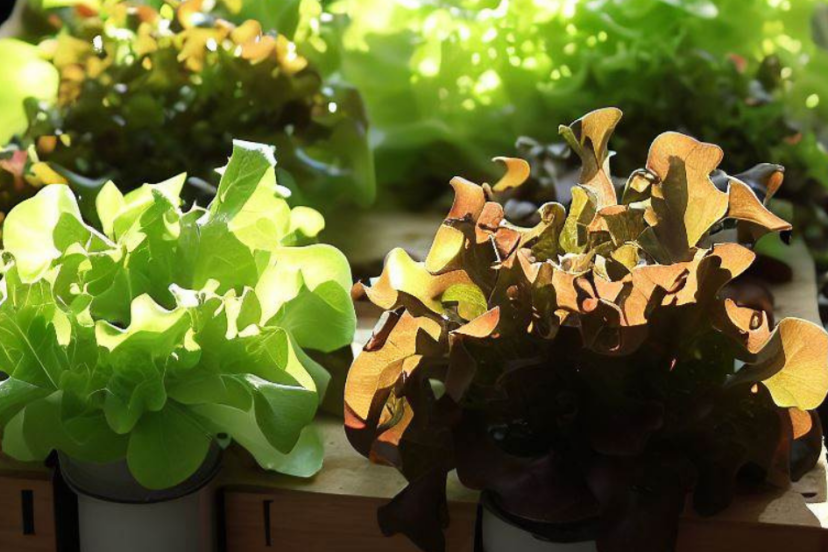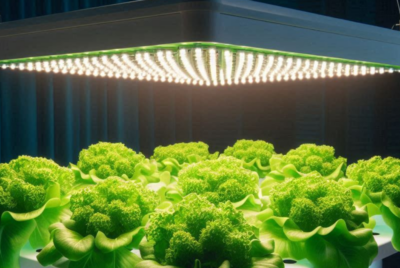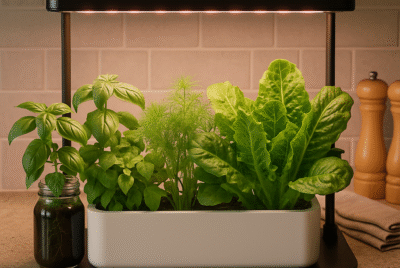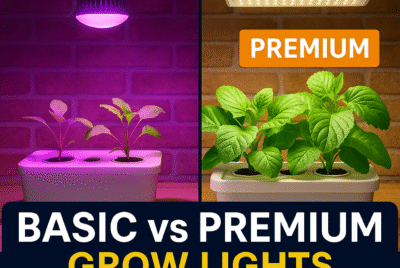DIY Hydroponics: Growing Your Own Garden of Abundance
Discover the wonders of DIY hydroponics and unlock the potential of growing your own garden in any space. This comprehensive guide provides step-by-step instructions, helpful tips, and valuable insights for beginners and enthusiasts alike. Learn how to assemble and maintain your own hydroponic system, select the right plants, optimize growth conditions, troubleshoot common issues, and reap the bountiful rewards of your efforts. Dive into the world of DIY hydroponics and cultivate your own oasis of fresh and nutritious produce.
Introduction
In a world where space is limited and environmental concerns are on the rise, DIY hydroponics offers a remarkable solution for growing your own garden. With this innovative gardening method, you can cultivate a variety of plants without the need for soil. As an enthusiast and advisor of DIY hydroponics, I’m here to guide you through the exciting journey of setting up your own hydroponic system and reaping the benefits of homegrown produce.
Getting Started with DIY Hydroponics
Benefits of DIY Hydroponics
DIY hydroponics comes with a multitude of advantages. Firstly, it allows you to grow plants in any space, whether it’s a small apartment balcony or a spacious backyard. You can enjoy fresh herbs, vibrant vegetables, and even beautiful flowers regardless of your location. Secondly, hydroponics offers precise control over nutrient delivery, ensuring optimal plant growth and higher yields. Lastly, this method conserves water as it requires up to 90% less water compared to traditional soil gardening.
Choosing the Right System for Your Needs
When embarking on your DIY hydroponic journey, it’s essential to select a system that suits your requirements and available space. Some popular options include deep water culture (DWC), nutrient film technique (NFT), and ebb and flow systems. Each system has its own advantages and considerations, so research and evaluate which one aligns best with your goals and resources.
Essential Equipment and Materials
To get started, gather the necessary equipment and materials for your DIY hydroponic system. You’ll need containers or grow trays, a reservoir to hold the nutrient solution, an air pump for aeration, growing media (such as perlite or rockwool cubes), pH testing kit, and a reliable light source. Additionally, hydroponic nutrient solutions specifically formulated for plant growth are readily available.
Setting Up Your DIY Hydroponic System
Now that you have your equipment, it’s time to assemble your DIY hydroponic system. Follow these steps:
1. Select a suitable location: Choose a space with ample natural or artificial light and a stable temperature range.
2. Build or arrange your grow tray: Ensure it’s sturdy and watertight, and place it in a convenient spot.
3. Set up the reservoir: This is where you’ll store the nutrient solution. Make sure it’s large enough to accommodate the plants’ needs.
4. Install the air pump: Oxygenation is crucial for healthy root development, so connect an air pump to the reservoir.
5. Add the growing media: Fill the grow tray with your chosen growing media, leaving enough space for the plants to be inserted.
6. Prepare the nutrient solution: Follow the instructions on the nutrient solution packaging to mix it with water and achieve the desired concentration.
7. Test and adjust pH levels: Use a pH testing kit to monitor and adjust the pH of the nutrient solution, aiming for a range of 5.5-6.5.
8. Insert your plants: Gently place your seedlings or seeds into the growing media, ensuring they have proper support.
Nutrient Solutions and Feeding Your Plants
Hydroponic plants rely on nutrient solutions for their growth and development. These solutions contain a balanced blend of essential nutrients that are readily available to the plants’ roots.
It’s important to monitor and maintain the nutrient levels to ensure optimal plant health. Here are some key considerations:
– Mixing and adjusting nutrient solutions: Follow the instructions provided by the manufacturer to prepare the nutrient solution. Measure the appropriate amount and mix it thoroughly with water. Make adjustments as needed based on the growth stage and specific requirements of your plants.
– Monitoring and maintaining nutrient levels: Regularly check the pH and nutrient levels of your hydroponic system. Use a pH meter to ensure the pH remains within the recommended range. Additionally, monitor the electrical conductivity (EC) of the nutrient solution to assess the nutrient concentration. Adjust the nutrient solution accordingly to maintain optimal levels for healthy plant growth.
Plant Selection and Care
Choosing the right plants for your DIY hydroponic garden is crucial. Consider plants that thrive in hydroponic environments and align with your preferences. Herbs like basil, mint, and parsley, leafy greens such as hydroponic lettuce and spinach, and compact vegetables like hydroponic tomatoes and peppers are popular choices. When selecting plants, pay attention to their growth habits, lighting requirements (hydroponic grow lights ), and compatibility with the chosen hydroponic kit.
To ensure successful plant growth:
– Transplanting seedlings or starting from seeds: Depending on your preference and available resources, you can either start with seeds or transplant seedlings into your hydroponic system. Follow proper transplantation techniques to minimize stress on the plants and promote healthy root development.
– Providing proper care and maintenance: Regularly inspect your plants for signs of nutrient deficiencies, pests, or diseases. Maintain a suitable environment by adjusting lighting intensity, temperature, and humidity levels as needed. Proper ventilation and air circulation are also vital for preventing issues like mold and fungal growth.
Lighting and Environmental Considerations
Lighting plays a crucial role in the success of your DIY hydroponic garden. Since plants receive their energy from light, it’s important to provide an adequate light source. Consider the following factors:
– Importance of proper lighting for plant growth: Plants require the right spectrum and intensity of light for photosynthesis. In indoor hydroponic setups, artificial grow lights, such as LED or fluorescent lights, can effectively substitute natural sunlight.
– Selecting the right grow lights: Choose lights specifically designed for plant growth, considering the light spectrum (e.g., blue and red) and wattage suitable for the plants you’re growing. Position the lights at the correct distance from the plants to prevent heat stress or light burn.
– Managing temperature, humidity, and ventilation: Maintain a stable temperature range suitable for the plants being grown. Adequate ventilation helps control humidity levels, preventing excessive moisture that can lead to fungal issues. Use fans or exhaust systems to ensure proper air circulation within the growing area.
Troubleshooting Common Issues
While DIY hydroponics can be rewarding, challenges may arise along the way. Here are some common issues and ways to address them:
– Identifying and addressing nutrient deficiencies: Learn to recognize signs of nutrient deficiencies such as yellowing leaves or stunted growth. Adjust the nutrient solution by either increasing the overall concentration or targeting specific nutrient ratios to resolve deficiencies.
– Dealing with pests and diseases: Implement preventive measures like maintaining a clean environment, regularly inspecting plants, and introducing beneficial insects to control pests. If diseases occur, isolate affected plants and consider organic treatments or consult with a local gardening expert.
– Managing pH fluctuations: pH levels in hydroponic systems can fluctuate due to various factors. Monitor the pH regularly and make adjustments using pH up or pH down solutions to keep it within the optimal range.
Harvesting and Enjoying the Fruits of Your Labor
The ultimate reward of DIY hydroponics is the joy of harvesting and enjoying your homegrown produce. Keep the following in mind:
– Signs of readiness for harvest: Different plants have specific signs that indicate they are ready to be harvested. These signs may include changes in color, size, or texture. Refer to plant-specific guidelines for the best harvesting time.
– Harvesting techniques for different plants: Each plant has its own harvesting requirements. Some plants may require cutting, while others may need gentle twisting or plucking. Use clean and sharp tools to avoid damaging the plants during harvest.
– Proper storage and preservation: After harvesting, handle the produce with care to prevent bruising or damage. Store them in appropriate containers or bags, keeping them refrigerated if necessary. Enjoy the freshness and flavor of your homegrown produce as part of your meals, and share the abundance with friends and family.
Conclusion
Embarking on a DIY hydroponics journey allows you to experience the joy of growing your own garden, regardless of your available space or location. By following the steps outlined in this guide, you can set up your own hydroponic system, select suitable plants, and provide them with the necessary care and maintenance. Enjoy the benefits of fresh, nutrient-rich produce while contributing to sustainable gardening practices.
Remember, DIY hydroponics is a continuous learning process, and each garden may have its unique challenges. Stay curious, experiment with different plants and techniques, and be patient with the learning curve. With time and experience, you’ll develop a green thumb and enjoy the bountiful rewards of your DIY hydroponic garden.
FAQs
1. How much time and effort does DIY hydroponics require?
The time and effort required for DIY hydroponics depend on the size of your garden and the complexity of your chosen system. Initially, setting up the system may take some time, but once established, maintaining the garden requires regular monitoring and adjustments.
2. Can I grow all types of plants using hydroponics?
While hydroponics allows you to grow a wide variety of plants, some plants may be more suitable for hydroponic systems than others. Leafy greens, herbs, and compact vegetables tend to thrive in hydroponic environments.
3. Do I need to be an experienced gardener to start DIY hydroponics?
No, you don’t need to be an experienced gardener to start DIY hydroponics. Basic knowledge of plant care and a willingness to learn and experiment are sufficient. With time and practice, you’ll become more proficient in managing your hydroponic garden.
4. How often should I check the nutrient levels in my hydroponic system?
Regular monitoring of nutrient levels is essential to ensure optimal plant growth. It’s recommended to check the nutrient levels at least once a week and make adjustments as needed based on the growth stage and specific requirements of your plants.
5. Can I reuse the nutrient solution in hydroponics?
While it’s possible to reuse the nutrient solution, it’s generally recommended to refresh the solution periodically to maintain optimal nutrient balance. Over time, the nutrient solution can become depleted or imbalanced, affecting plant health. Regularly monitor the nutrient levels and replace the solution when necessary.
Remember, the world of DIY hydroponics is filled with endless possibilities. Enjoy the journey of nurturing your own garden and savor the taste of your homegrown harvest!
*We may earn a commission from purchases made through our links, at no cost to you. This does not affect our product recommendations. Please see our disclosure to learn more.




